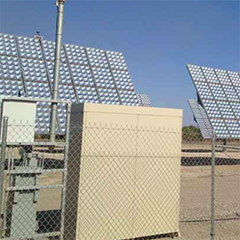PES presents an exclusive, in-depth look at the pioneering projects and products of G. Lufft Mess- und Regeltechnik GmbH.
Global cooperation with system partners requires a wide variety of different variants and interfaces. Lufft environmental sensors, whether stationary or mobile, can be integrated via many different protocols in new or existing applications.
Through the low power consumption, the use of the WS compact weather sensor family from Lufft is altogether possible in the area of solar assessment as well as monitoring. Here, in particular, low installation and assembly efforts are appreciated.
But how did Lufft start to evolve sensors for the solar industry?
In the early nineties, Lufft used the radiation sensors from Haenni, Switzerland, to build into the first automatic weather stations. The silicon radiation sensor “Solar 130” was the first one to be used for the weather sensors. This specimen served as predecessor of the Lufft-own silicon pyranometer. While in the meantime, Haenni stopped the solar radiation sensor production and Lufft has started to work with Kipp & Zonen sensors – the world’s leading pyranometer manufacturer.
The weather sensor family has now grown and consists of a wide range of all-in-one solutions suitable for different customer needs. Four of the 18 WS versions include a pyranometer with different quality levels: WS301, WS501 and WS503 include a thermopile second class CMP3 pyranometer from Kipp & Zonen, WS310 and WS510 (which was introduced this year), are equipped with a CMP10 Secondary Standard pyranometer from Kipp & Zonen and the WS304, WS502, WS504 and WS700-UMB measure the solar radiation with the help of a Lufft own silicon solution, which was evolved on base of the Haenni sensor.



























